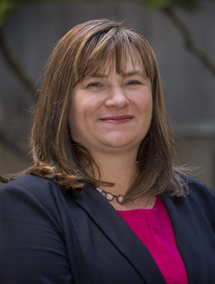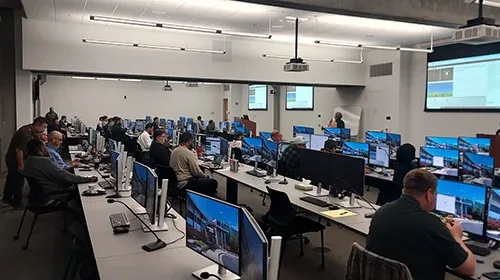ISO now has expanded training and emergency operations facilities


The California ISO is continuing to improve operational capabilities and grid reliability through the launch of its newly expanded training and emergency operations facilities at our Folsom headquarters. Training for grid operators working in the ISO Control Center is extensive, and we are always striving to deliver a program that engages individuals and teams of grid operators in active and practical exercises. Our Incident Management team also engages in extensive training exercises throughout the year.
Today, we are proud to offer an expanded dedicated training space that includes a 100-seat training room with 48 workstations that can be split into two rooms. There is also a state-of-the-art simulator room with 18 operator consoles and an advanced video wall with a vast, open instructor space. Our new emergency operations center is also ready for corporate training exercises or for managing incidents at any time. It’s equipped with multiple TV monitors, projectors, radio and satellite communication capabilities, five tables for the Incident Management teams with workstations that seat up to 75 people – all with backup generator and Uninterruptible Power Supply (UPS) systems.
Training at CAISO
An ISO operator’s work schedule rotation requires one training week every six weeks, enabling operators to complete their training topics for the year. Operators must complete a minimum of 200 continuing education hours within a three-year period to maintain certified Operator credentials from the North American Electric Reliability Corporation, (NERC). It’s what we like to call their “license to drive” and work as a System Operator.
Altogether, our training team oversees the development and delivery of at least 30 weeks of training per year for more than 100 operators, engineers and other employees.
The team also extends invitations to external operators for specific seasonal, regional, and emergency training classes.
In 2024, for instance, more than 1,000 participants from across the Western Electric Coordinating Council area attended classes virtually and in person at our training facilities.
Our Operations Training Program goes above and beyond basic requirements to help operators grow their knowledge and skills to adapt to a grid that is rapidly changing with new resources and greater interconnectivity and coordination. That means our curriculum is designed with different operational scenarios and a variety of ways to engage participants that improve their retention of training concepts.
Whenever possible, trainers include different simulated scenarios, such as natural disasters or outages that could affect the operation of the bulk electrical transmission system. These scenarios can be developed for different regions of the grid and be added to and adjusted live during the simulations, which can last up to eight hours. This gives operators the training to work through a variety of events to resolve issues and return the system to normal operations.
Training has always been a foundational part of the ISO’s work and mission, and like the organization, our training capabilities have evolved over the years.
Our original training facilities were split between our northern and southern California control centers to support operators at each location. When the southern California site was replaced with a new control center in northern California, we consolidated all training into the Folsom location but quickly outgrew our training and simulation rooms.
The new training space also provides a beneficial set of tools for our Operational Readiness and Technology teams to engage with peers and discuss how to achieve the company’s Corporate Strategies like modernization, streamlining, automation and re-imagining what situational awareness needs will be in the future.
With an evolving grid and more frequent extreme weather events, the job of grid operator is becoming even more challenging. Having top-flight training programs and facilities helps achieve organizational readiness and best positions the ISO to continue delivering on its mission to reliably and efficiently operate the grid.


